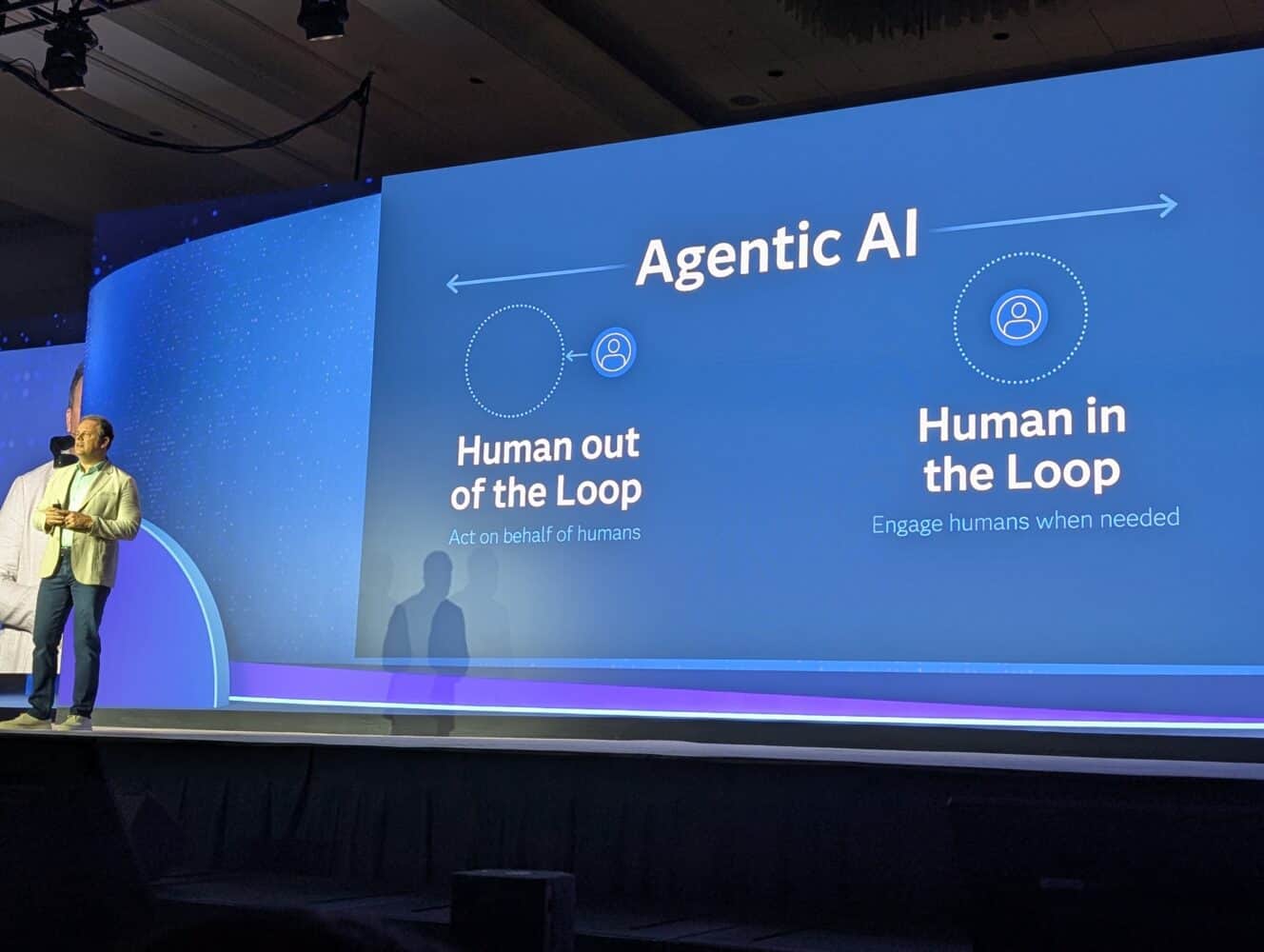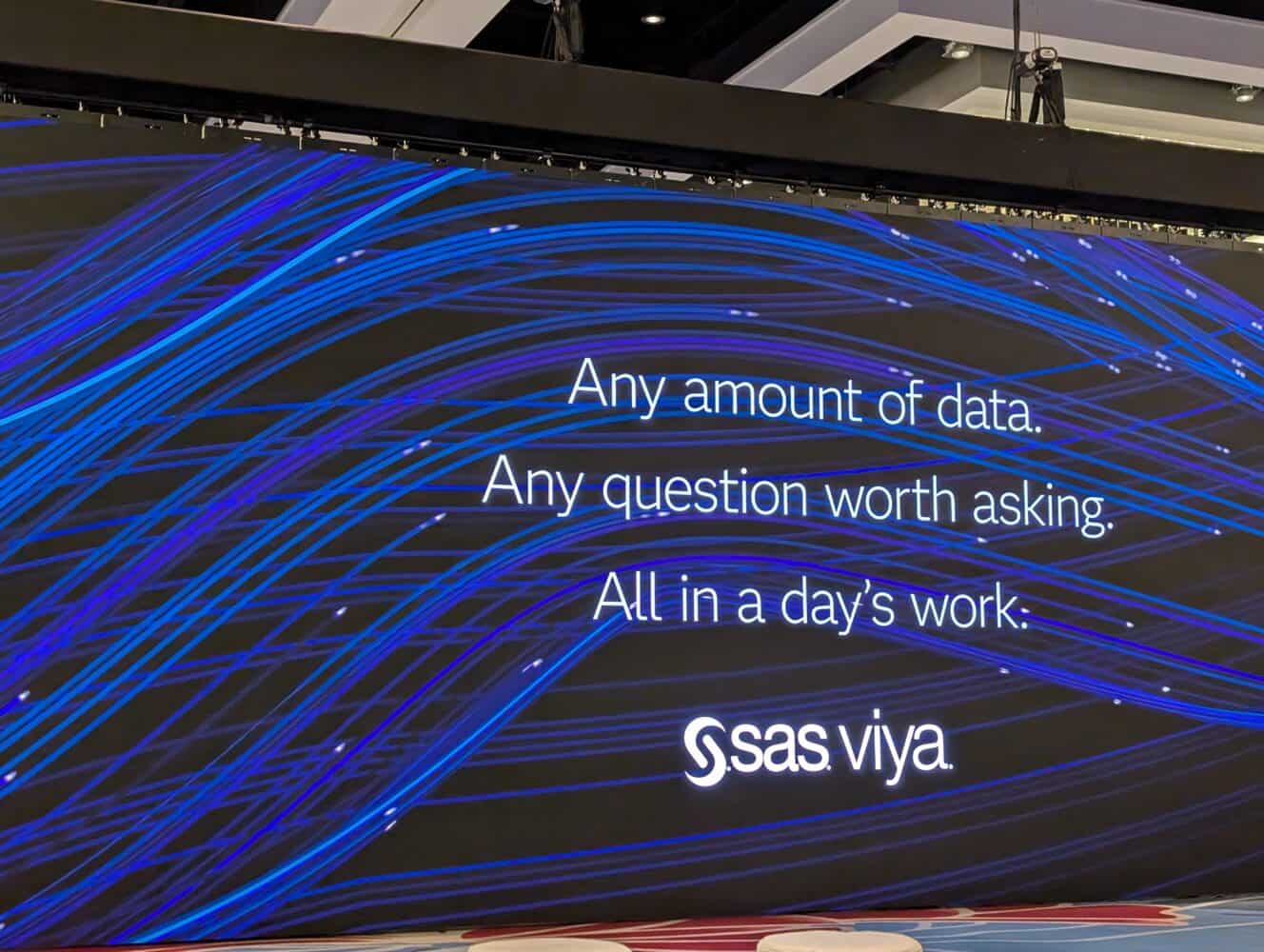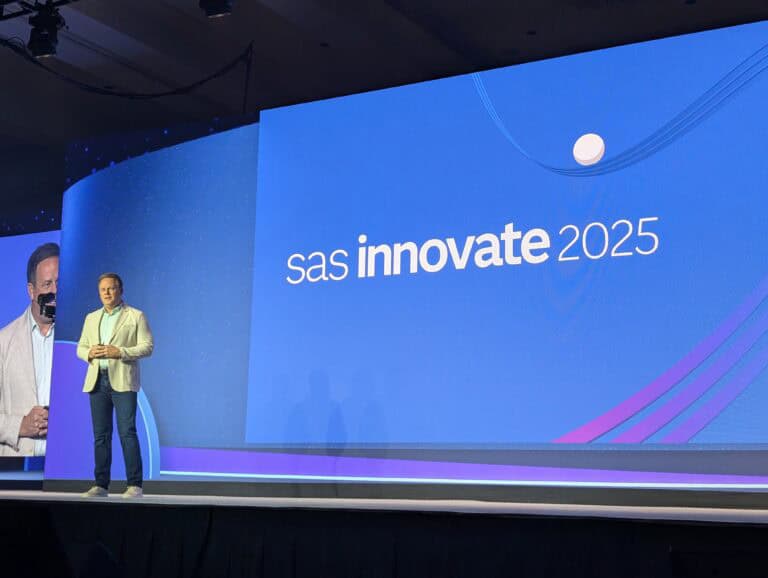Its rich history makes SAS a trusted platform for data scientists. However, with the enormous leaps and growing interest in artificial intelligence, the role of the data professional is also changing significantly. At SAS Innovate in Orlando, the company is showing how it is helping its loyal users and even new target groups meet the latest expectations surrounding AI. AI agents have a special role to play.
If you ask SAS where a modern AI strategy begins, everything will revolve around Viya. This is the platform on which the company deploys all its resources. With a cloud-native architecture, it can support the entire analytics lifecycle. In addition to the data scientist, the developer plays an increasingly important role, but SAS also sees regular business users and C-level executives becoming involved. Data privacy, accelerating decision-making, increasing productivity, and strengthening trust in AI apps are important for all these groups.
SAS wants to demonstrate that it is a stable factor that transcends the hype and focuses on practical applications. “Our goal is to deliver cutting-edge AI capabilities that help organizations navigate the hype and disruption, make breakthroughs in problem solving, and gain a decision advantage,” said CTO Bryan Harris at the opening keynote of the annual conference.
Ensuring better data
One of the ways SAS Viya promises to help achieve this goal is with the upcoming availability of Data Maker. This synthetic data generator helps organizations address privacy challenges and data scarcity. Synthetic data was identified by SAS as a focus area about two years ago, as it is well-suited for generative AI. Synthetic data simulates the real world without revealing personally identifiable or confidential information. This allows the data to be used for model training, improving the models’ accuracy. Issues normally out of reach for privacy reasons can be investigated.
Data Maker was introduced in private preview last year. It stems from the November acquisition of the software assets of synthetic data specialist Hazy. SAS is now almost ready to implement the Hazy technology in its entirety in Viya. Data Maker is scheduled for general availability sometime between July and September.
The arrival of SAS Data Maker makes sense at a time when organizations often struggle to obtain sufficient and high-quality data. SAS has previously stated that real-world data is not always reliable or sufficient. The synthetic data tool aims to address this problem through a no-code/low-code setup so that even non-technical employees can use it.
Tip: SAS dives deeper into synthetic data with Hazy acquisition
Intelligent decision-making with AI agents
Given SAS’s previous steps, the greater role of synthetic data seems logical. However, another important question before the start of the Innovate conference was what would happen in the field of AI agents. This form of artificial intelligence is gaining momentum, and an extra boost from SAS would be welcome in this regard.
Users can now find that extra step on the Viya platform in the form of Intelligent Decisioning. This tool enables organizations to build and implement AI agents with the right balance between AI autonomy and human involvement. This ensures an optimal balance between supervision and automation, tailored to the complexity of the task, the risks, and the business objectives.

That sounds very interesting, of course. At the same time, our initial reaction was, “Why should you go to SAS for this?” Many software platforms have started doing something similar in AI agents, allowing you to build out-of-the-box agents with platforms you already trust. With SAS, however, the added value of a pure data and AI platform comes into play. Their emphasis on governance and control sets SAS’s AI agents apart. They have found the right balance between autonomous decision-making and ethical use.
Viya, therefore, relies on an agentic AI framework based on three pillars that determine how AI agents are designed and delivered. First is decision-making, where a hybrid approach combines deterministic analytics with the flexibility of LLMs for accurate and reliable outcomes, with the necessary business policies required in regulated industries. Second, the balance between humans and AI is taken into account. This allows organizations to determine the right level of AI autonomy and human involvement based on task complexity, risk, and business objectives. Finally, Viya has a built-in governance framework that ensures AI agents deliver accurate results and comply with ethical standards and privacy requirements.
Reaching the smaller companies
In recent years, SAS has also been moving closer to SMEs. The traditional product was particularly popular with large institutions, such as government, healthcare, and financial services. However, for smaller companies, getting value from data is also becoming increasingly important. An earlier step in this direction was a partnership with TD Synnex, a distributor that can reach the smaller business environment. In addition, during Innovate 2024, SAS announced its broader commitment to making AI technology more accessible to all types of organizations. After all, not every organization has the resources and expertise to build AI models, even though AI can deliver clear performance improvements for these organizations.
At the beginning of this year, SAS Managed Cloud Services: SAS Viya Essentials hit the market, a ready-to-use Managed Cloud Services variant of selected SAS Viya products. This service, aimed primarily at small and medium-sized businesses, lowers the barrier to entry to the SAS platform by offering Viya as a compact, out-of-the-box hosted managed service.
The love for Microsoft
Viya Copilot also has a prominent role to play at Innovate. This is an AI-driven conversational assistant in the SAS Viya platform. The assistant provides developers, data scientists, and business users with a personal assistant that accelerates analytical, business, and industry-specific tasks. Copilot is available via an invitation-only private preview, with general availability planned for the third quarter of 2025.
Key features of the first Copilot release include AI-driven model development and code assistance for SAS users. Built on Azure AI Services, Viya Copilot builds on the collaboration between SAS and Microsoft. During the conference, we will try to find out more about how far along and accurate the assistant is, and what it will ultimately be capable of.

SAS Viya Workbench expands
The existing Viya Workbench code environment for developers, data scientists, and modelers has also been expanded. The new update for 2025 adds support for the R language. Alongside SAS’s language and Python, this is the most important language for data scientists using Viya, making its inclusion in Workbench a welcome addition. In addition, the platform now offers SAS Enterprise Guide as an optional IDE development environment and extends its original availability on AWS Marketplace to Microsoft Azure Marketplace.
Productivity and confidence
With Viya, SAS aims to break through the AI and generative AI hype by delivering real capabilities that drive results. The platform enables users of all skill levels to participate in the analytics process, focusing on the data scientist. Users can choose whether to build AI with end-to-end platform tools or purchase ready-made AI solutions and model packages.
For SAS, which has nearly 50 years of experience in data and analytics, the current shift toward more pragmatic AI applications seems like an excellent time to leverage its expertise. With AI agents, the company is opening a new chapter in how organizations make decisions, with the human factor still playing a significant role in the bigger picture.
